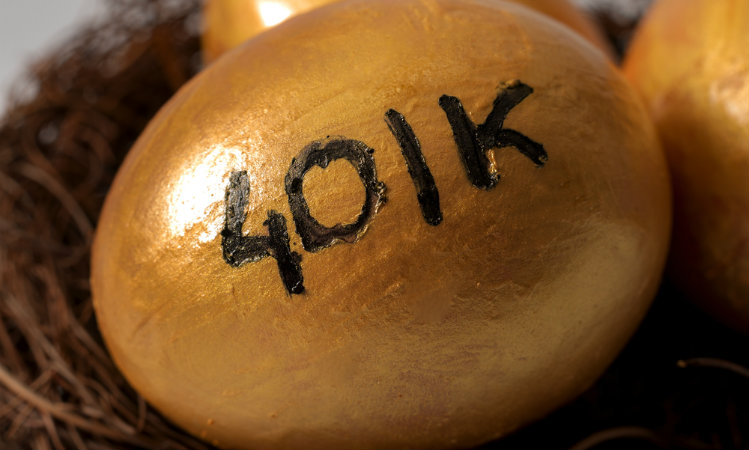The Rollover Business Start-Up Solution (“ROBS”) is the only legal way one can use retirement funds to start or fund a business involving the retirement account holder or a lineal descendant. Whether you are starting a new business/franchise or buying an existing one, the ROBS solution will allow you to accomplish your business goals – tax-free and without penalty.
How Does the Rollover Business Startup Solution Work?
How to Complete a Rollover Business Startup
Establish a C Corporation
Establish a new C Corporation in the state the business will be operating. To qualify for the ROBS Solution, the C Corporation cannot elect to be taxed as an “S” corporation. Further, an LLC does not satisfy this definition.
Use the C Corporation to adopt a 401(k) plan
The ROBS Solution requires the new C Corporation to adopt a prototype 401(k) plan. This allows the 401(k) plan to directly purchase C Corporation stock as qualifying employer securities.
This article will explore how the 401(k) contributions work for a ROBS 401(k) plan that is a:
1. Solo 401(k)
2. Traditional 401(k) Plan
3. Safe Harbor 401(k) Plan
Estimated Cost: 3500 USD
The Solo 401(k)
The Solo 401(k) plan is designed specifically for small businesses with no full-time employees (over 1000 hours worked per calendar year) other than the owner or the owner’s spouse. The Solo 401(k) plan is especially attractive and popular with self-employed business owners. However, the ability to make high annual maximum contributions remains the most important Solo 401(k) plan feature.
Maximum Solo 401(k) Plan Contribution
In general, a Solo 401(k) plan consists of two components: (i) employee deferrals and (ii) employer profit sharing contributions. The first type of contribution is the elective deferral, the contribution you make as the employee. The second type of contribution in this type of plan is the employer contribution, a percentage of your self-employment or Schedule C income.
For 2024, the maximum aggregate Solo 401(k) plan contribution, including employee deferrals and employer profit sharing contributions is $69,000 ($76,500 if the participant is at least age 50).
Employee Elective Deferrals
Participants in a Solo 401(k) plan can make elective deferral contributions, dollar-for-dollar, based on their Schedule C or W-2 earnings. The maximum employee deferral contribution in 2024 is $23,000 ($30,500 if the participant is at least age 50). Based on what your plan documents allow, employee deferrals can be made in either pretax or Roth formats.
Employee deferrals are 100% elective. The deadline for making employee deferrals is based on the type of business that adopted the Solo 401(k) plan. Sole proprietors and single member LLCs have until the filing of the 1040 tax return to make deferrals, but owners/employees of partnerships and corporations must elect to make employee deferral contributions by the end of the calendar year.
Employer Profit-Sharing Contributions
Employer profit sharing contributions are limited to a percentage of each eligible plan participant’s compensation. For a sole proprietor or a single member LLC, the maximum employer profit sharing contribution percentage is 20%. However, for a C or S corporation paying W-2 wages, the maximum employer profit sharing contribution percentage is 25%. Employer profit sharing contributions must be made in pretax form but can be converted to Roth.
Traditional 401(k) Plan No Safe Harbor Election
A 401(k) plan is a defined contribution, employer-sponsored/employee benefit arrangement. At its most basic level, it is designed to provide retirement income for eligible employees. All 401(k) participants have the option to contribute a portion of their salary into their retirement account. A 401(k) Plan is also a profit-sharing plan where employees can defer a portion of their compensation on a pretax basis. The traditional 401(k) plan also allows employees to receive taxable compensation in the current year or defer taxation and have the employer contribute compensation into a retirement plan. If the plan allows, participants can make Roth (after-tax) contributions up to the deferral limits.
In general, 401(k) contribution rules must comply with various non-discrimination requirements based in the ERISA statutory regime. Unlike a Solo 401(k) plan, available only to businesses where there are no non-owner employees other than spouses, traditional 401(k) plan rules are designed to protect rank and file employees. To ensure that these requirements are met, the employer must perform annual compliance testing in the form of ‘Actual Deferral Percentage’ (ADP) and ‘Actual Contribution Percentage’ (ACP) assessments. Both tests verify that deferred wages and employer matching contributions don’t discriminate in favor of employees who receive higher wages because, in certain cases, traditional 401(k) have a tendency to favor employees in more valuable positions, and in some respects, neglect employees on the lower end of the pay spectrum.
The maximum 401(k) plan employee deferral contributions are the same as the Solo 401(k) plan. However, from an employer profit sharing contribution perspective, it remains especially uncommon for a business to offer employees profit sharing contributions greater than five percent of the employee’s salary. On the other hand, a Solo 401(k) plan commonly allows the business owner to elect to maximize their employer profit sharing contribution percentage.
Safe Harbor 401(k) Plan
A Safe Harbor 401(k) Plan is similar to a traditional 401(k) Plan, but there are some important distinctions. The Safe Harbor 401(k) Plan is recommended for most small businesses because it omits the strenuous ADP and ACP tests, which the participant and/or business can fail, potentially limiting the contributions that can be made to a 401(k). The Safe Harbor 401(k) is a much simpler plan to administer in contrast to the traditional 401(k), making it more popular for small businesses. The Safe Harbor 401(k) allows business owners to accurately calculate maximum plan contributions.
Rollover Business Startups & The 401(k) Plan
The ROBS strategy allows one to use IRA or 401(k) funds to invest in a business they will be actively involved in, tax free, without triggering the IRS prohibited transaction rules. If the business only has one employee, then the 401(k) plan can follow the Solo 401(k) plan contribution rules. However, the plan must file IRS Form 5500 (not Form 5500-EZ) because the plan owns qualifying employer securities (C Corporation stock). On the other hand, if the C Corporation has more than one employee, the business owner should elect to have the 401(k) plan satisfy IRS Safe Harbor rules, making plan administration much more simple.
Contact Us
To learn more about the right 401(k) plan for you and your business, call our 401(k) plan administration experts. We’re standing by to help you navigate the complex IRS and ERISA plan rules. Contact us today.








